Würzburg sits right in the heart of Franconia. It’s one of those rare German cities where winemaking stretches back centuries, and the flavors of local grapes somehow feel both familiar and new.
I came here hoping to really taste what makes Franconian wine special. Silvaner, the region’s most famous grape, completely lived up to the hype.
Tasting Silvaner from those classic Bocksbeutel bottles in Würzburg gave me a new appreciation for German wine and the traditions that shape it.
When I wandered through vineyards that have thrived for generations, I saw how wine is woven into daily life in Franken. Every glass of Silvaner I tried had crisp, lively notes that you just don’t find anywhere else.
Those iconic Bocksbeutel bottles? They’re everywhere—round, flat, and bursting with local pride.
If you’re planning a trip through Germany’s wine regions, you should absolutely stop in Würzburg to experience Franconian wines. The city, its wineries, and the unforgettable taste of Silvaner give you a real look at the heart of German winemaking.
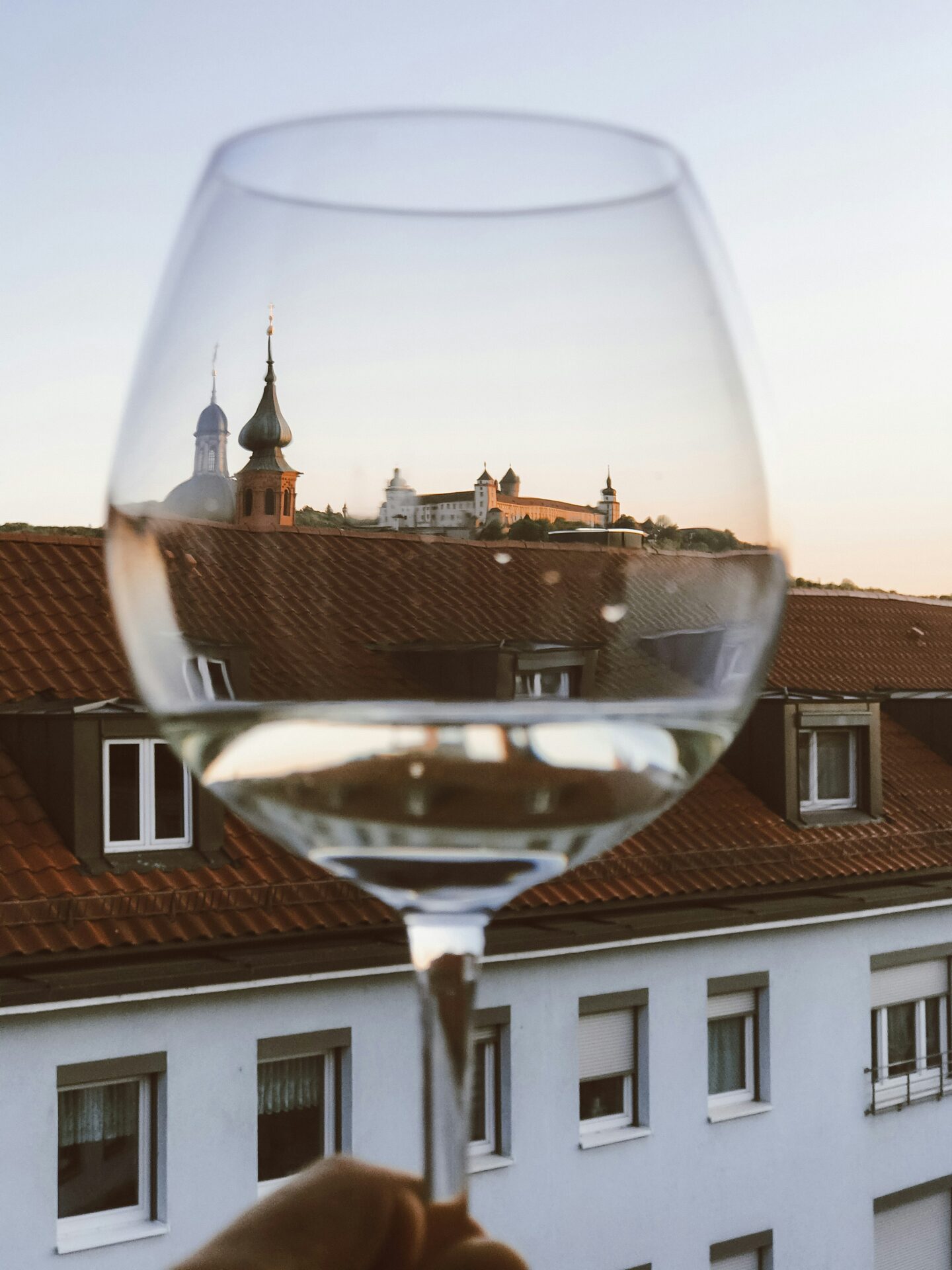
Discovering Franconian Wine Culture
Würzburg sits smack in the middle of Franconia, a German wine region that’s known for its unique wine styles and deep traditions. When I explored the city, I quickly figured out that wine here isn’t just a local specialty—it’s part of everyday life, history, and even the landscape itself.
The Unique Wine Heritage of Würzburg
Würzburg’s wine culture stands out in Germany because locals and their vineyards are so closely connected. I strolled the steep slopes above the Main River and saw grapevines that families have cared for over generations.
Silvaner is the star grape here. You won’t find it much elsewhere in Germany, but it thrives in Franconia. Trying a fresh, mineral-rich Silvaner at a winery made me get why people here love it so much.
Other local grapes:
- Müller-Thurgau
- Bacchus
- Riesling
- Pinot Noir
These grapes bring all kinds of flavors, from crisp whites to softer reds. Every summer, Würzburg throws lively wine festivals. It’s a fun way to try new vintages and join in on traditional songs and hearty food.
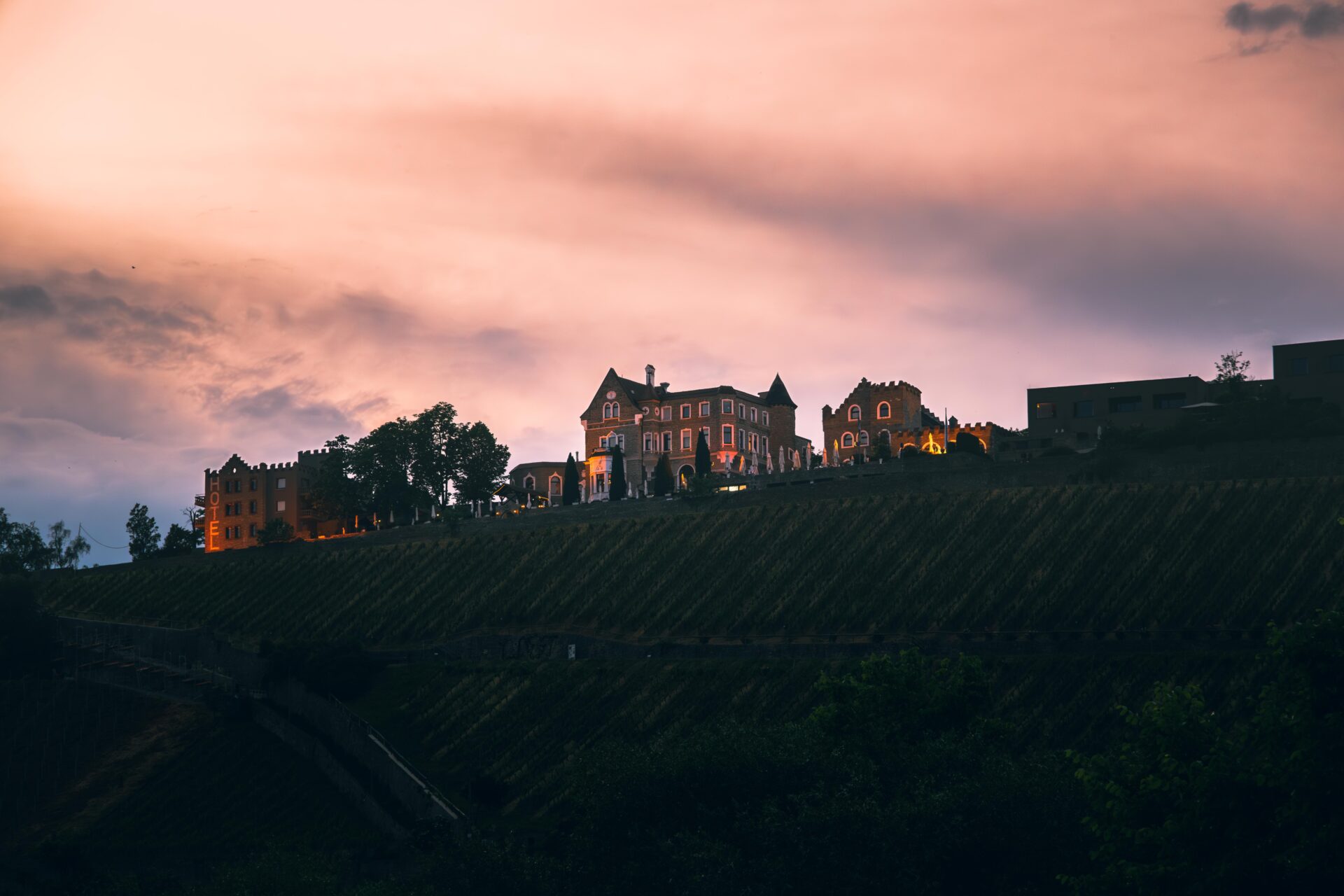
Historical Roots of Franconian Vineyards
Franconian viticulture goes back more than a thousand years. Monks started tending vineyards here, bringing the know-how that shaped the region.
As I walked past historic wineries and old tasting rooms, I realized that many estates still use cellars carved out centuries ago. The soil and climate—this “terroir” everyone talks about—give Franconian wines their signature taste.
Maps and stories from the Middle Ages often show Würzburg surrounded by vineyards. Wine played a huge role in local trade and helped the city grow wealthy.
Interesting fact: Some vineyards around Würzburg rank among the oldest in Germany and still produce wine today.
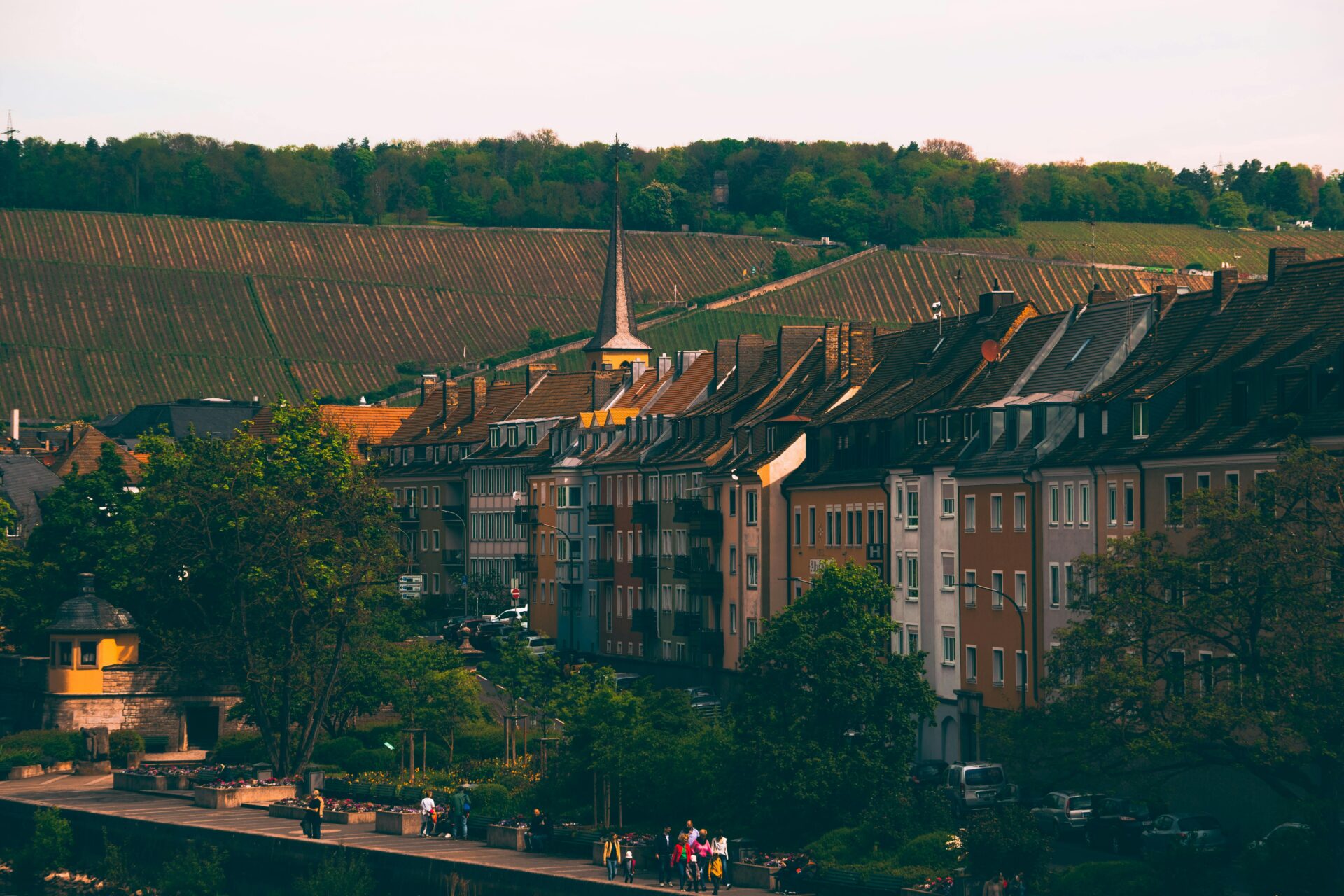
The Role of Bocksbeutel Bottles
I couldn’t help but notice the Bocksbeutel bottle. Its short, round shape instantly sets Franconian wines apart. This bottle design dates back hundreds of years—maybe it even stopped bottles from rolling down hillsides.
What makes the Bocksbeutel special?
- Wide, flat body
- Holds about 0.75 liters
- Reserved for high-quality Franconian wines
Pouring a glass from a Bocksbeutel just feels different. To me, it’s a symbol of Franconia’s dedication to tradition and quality. The bottle is actually protected by law, so you won’t see it used for wine from anywhere else. If you’re a wine lover visiting Würzburg, you have to check it out.
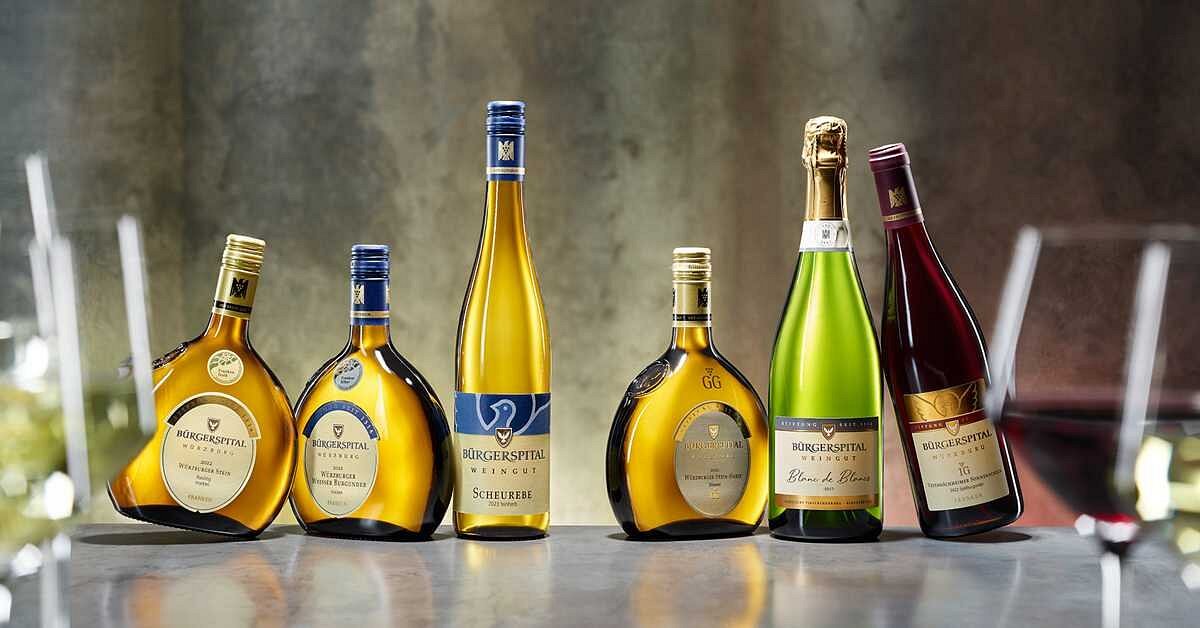
My Silvaner Tasting Journey
Tasting Silvaner in Würzburg opened my eyes to the real character of Franconian wines. From cozy vinotheks to the unique flavors in each glass, I picked up something new about dry German wines and the stories behind them.
First Impressions at Local Vinotheks
I kicked things off at a bustling vinothek in the center of Würzburg. A vinothek is basically a wine bar or shop where you can taste and buy local bottles.
Inside, rows of Bocksbeutel bottles lined the shelves—each one promising a bit of Franconian tradition. The staff welcomed me warmly and explained that Silvaner is the region’s signature grape.
Most wines here are dry, which is the Franconian style. They set up tasting flights so I could compare Silvaner with Müller-Thurgau and Riesling.
Locals dropped in to grab bottles for dinner, which made it clear that Franconian wine isn’t just for tourists. Snacking on crusty bread and cheese, I felt right at home.
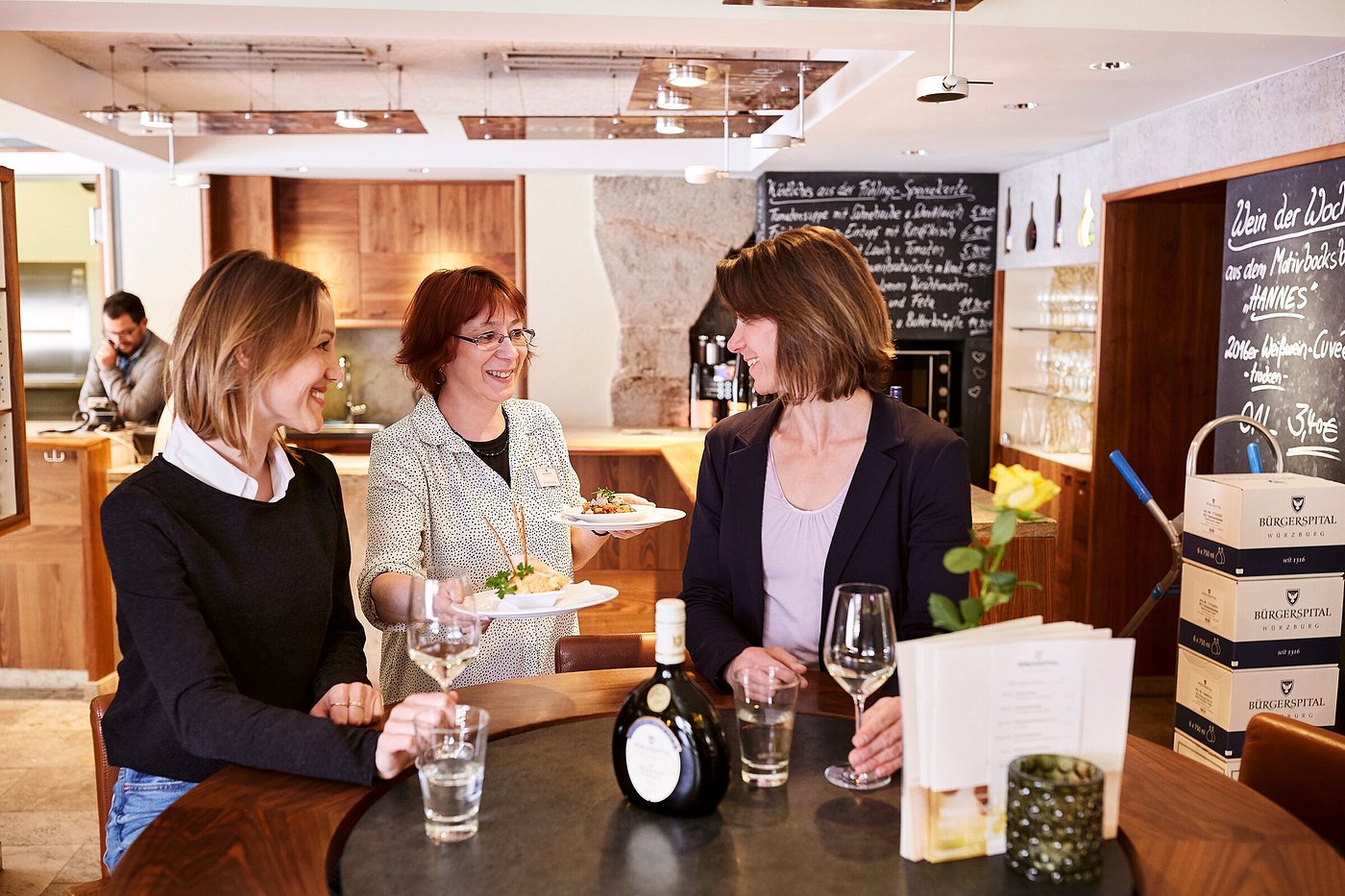
Tasting Notes: Silvaner’s Distinct Characteristics
My first sip of Silvaner hit me with clean, bright flavors. The wine was a clear golden color and had almost no sweetness at all.
It was bone-dry—just as I’d heard Franconian wines tend to be. I tasted crisp green apple and citrus, maybe a hint of fresh herbs, and a subtle mineral note that lingered after each sip.
This minerality seems to come straight from the local soils and careful fermentation. The texture was smooth, and the acidity kept things lively.
Quick Silvaner Profile Table:
| Feature | Description |
|---|---|
| Color | Pale gold |
| Taste | Dry, bright, crisp |
| Aromas | Apple, citrus, herbs |
| Body | Light to medium |
| Finish | Clean, refreshing, mineral |
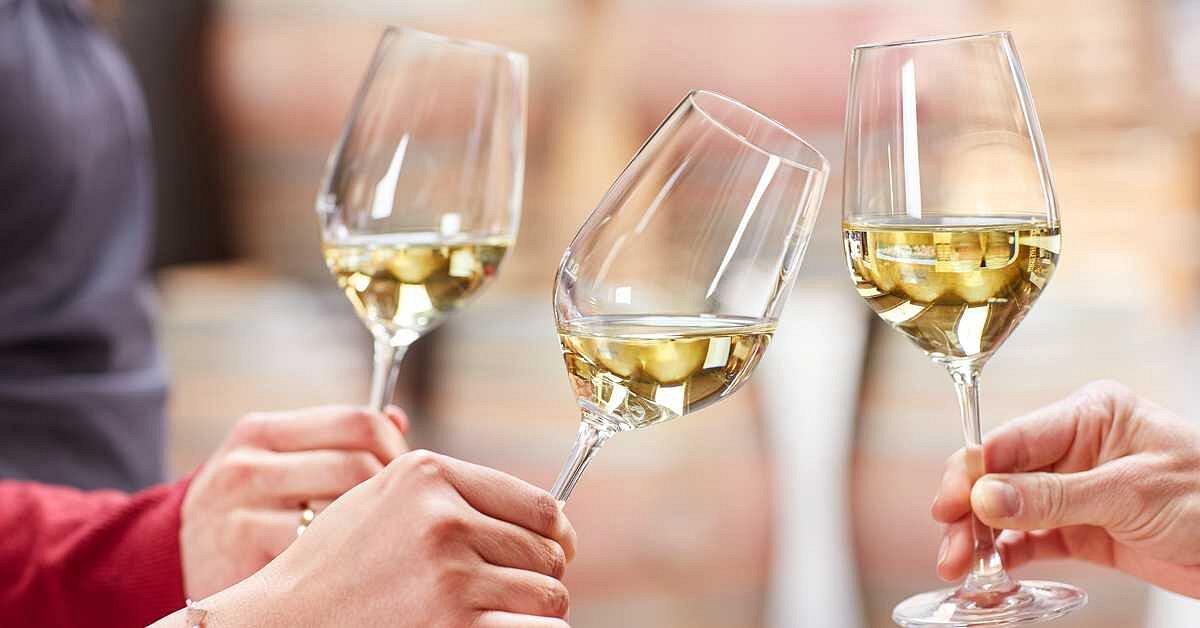
Comparing Silvaner with Müller-Thurgau and Riesling
At the vinothek, I tasted Silvaner side by side with Müller-Thurgau and Riesling. Silvaner stood out as the driest, with its sharp finish and subtle flavors.
Müller-Thurgau felt softer and a bit more floral, but it didn’t pack quite as much punch—easy to drink, but not as memorable if you love bold wines.
Riesling was the most aromatic of the bunch, with lots of fruity and floral notes. Even in Franconia, Riesling tends to be dry, but it’s got more acidity and complexity. Silvaner, though, is more restrained and food-friendly—a classic match for local dishes like pork roast or asparagus.
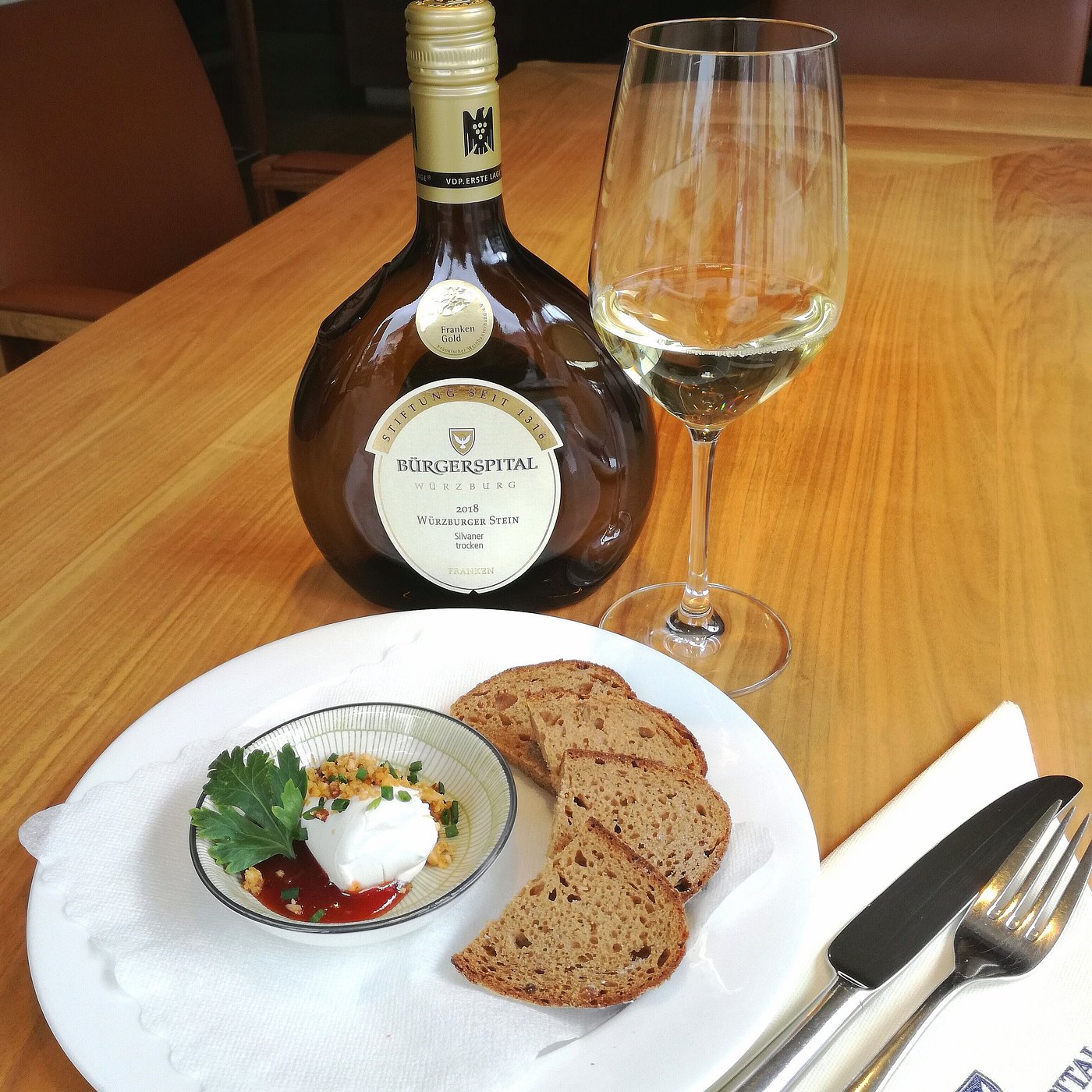
Wine Pairings and Culinary Adventures
Drinking Franconian wine in Würzburg isn’t just about sipping a glass. It’s really about food, tradition, and sharing the experience.
Every Silvaner comes alive when you pair it with the right dish or enjoy it during a cozy winemaker dinner.
Local Cuisine and Perfect Silvaner Matches
Pairing Silvaner, Würzburg’s signature white, with regional food is both fun and delicious. Its crisp, fresh notes go perfectly with classic Franconian specialties.
I found that Silvaner pairs best with:
| Franconian Dish | Silvaner Taste Note |
|---|---|
| Schäufele (pork shoulder) | Silvaner’s acidity cuts through the rich meat |
| Breads and sausages | Refreshing flavors enhance hearty snacks |
| Carp and river fish | Mineral notes from the wine highlight freshness |
| Green asparagus | Herbal hints in the wine match seasonal veggies |
Trying Silvaner with local fish and asparagus was honestly a highlight. The food was simple, but it felt so tied to Würzburg’s culture.
Even a basic dinner in a candlelit wine cellar felt special.
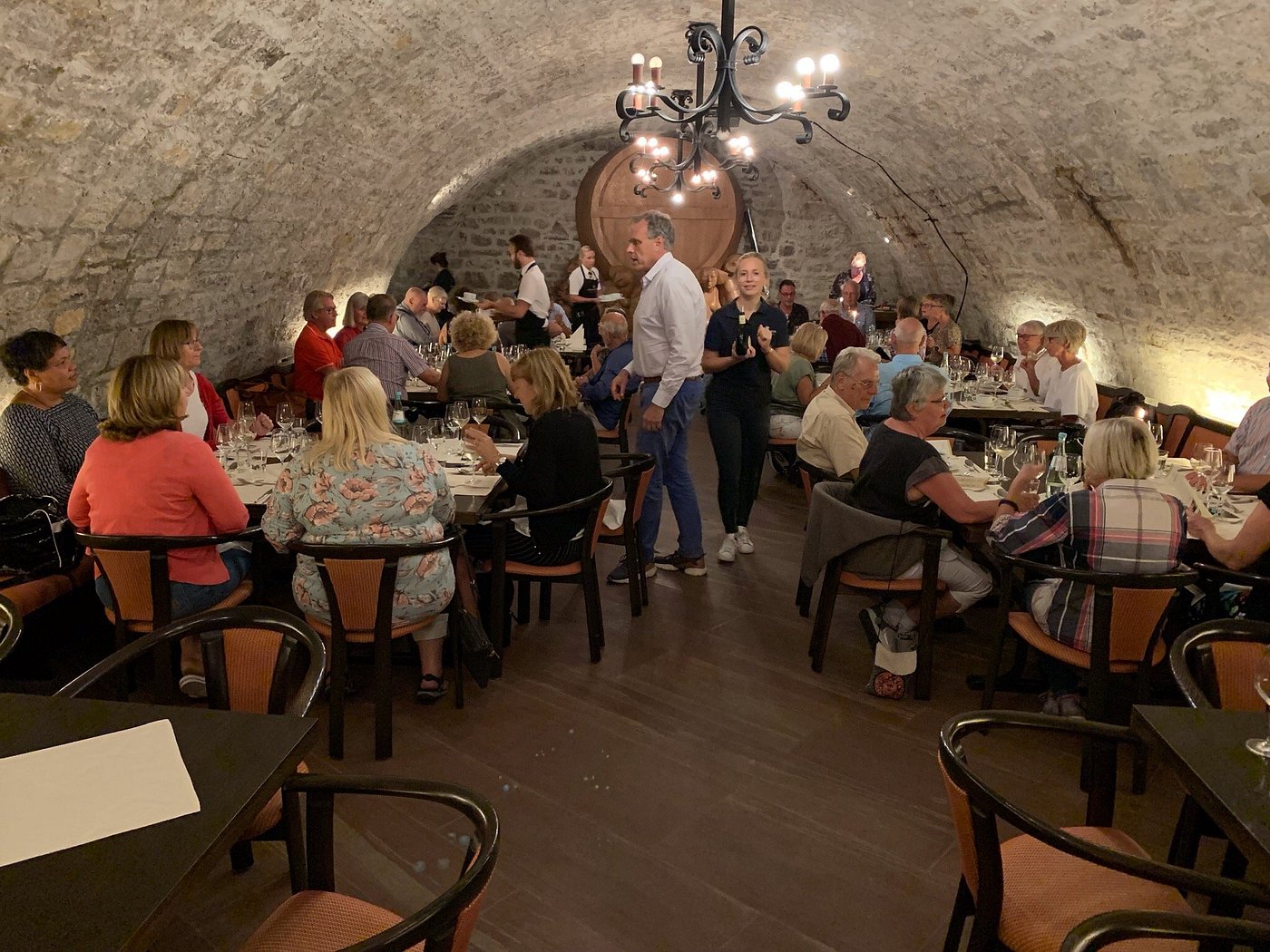
Winemaker Dinner Experiences
A winemaker dinner, or “Weinmenü,” turned out to be a real treat. I joined a small group in a cozy cellar, where the chef and winemaker led us through each course and glass.
Each dish came with a different Franconian wine—Silvaner, Müller-Thurgau, Riesling. The chef explained how the flavors matched up, like a creamy sauce with a dry white, or spicy sausage mellowed out by the wine’s fruitiness.
These dinners felt personal and relaxed. We could ask questions, get pairing tips, and hear vineyard stories straight from the winemaker.
At the end, tasting a vintage Bocksbeutel straight from the cellar with dessert was just unforgettable. Sharing food, laughter, and wine, I finally got why Würzburg’s charm is so tied to eating and drinking together.
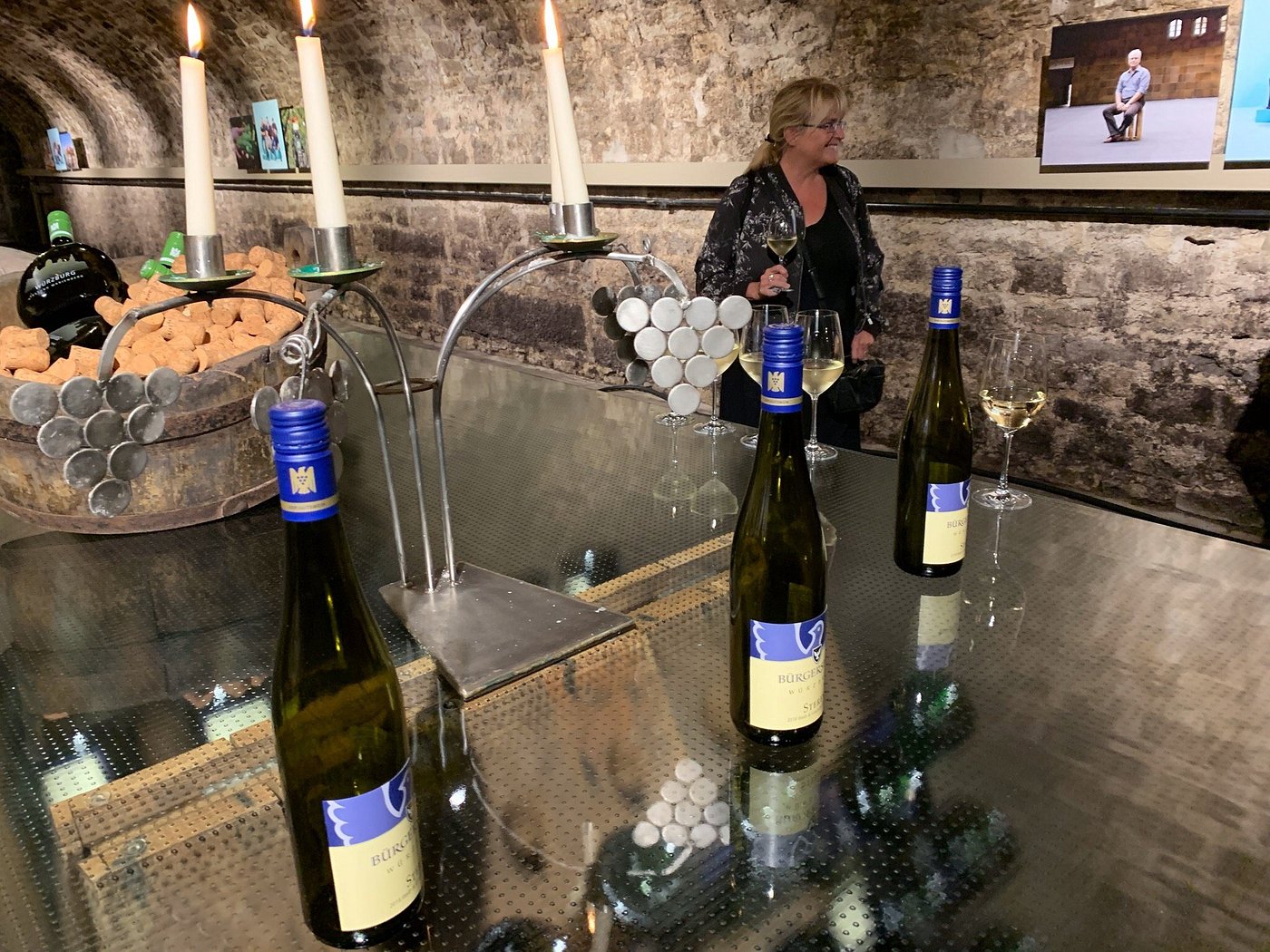
Wineries and Wine Tours in Würzburg
Würzburg is packed with historic wine estates, cool old cellars, and award-winning Franconian wines. Plenty of tours give you the chance to explore traditional Silvaner and see those unique Bocksbeutel bottles right at the source.
Cellar Tours and Tastings
One of my favorite things about Würzburg was joining a cellar tour beneath the vaulted ceilings of centuries-old wineries. Walking into those candlelit cellars, I got hit by the earthy scent of aging wine and the coolness of stone walls.
Tours usually start with a quick intro to Franconian wine history and grapes like Silvaner and Müller-Thurgau.
You get to sample several wines—usually six different pours—paired with fresh bread and mineral water. Some cellars, like the ones beneath the Würzburg Residence Palace, host tastings for both small groups and huge parties.
I loved the relaxed pace and the time to really savor each glass. A typical tasting lets you compare vintages and styles, so you can figure out what makes Franconian wines so unique.
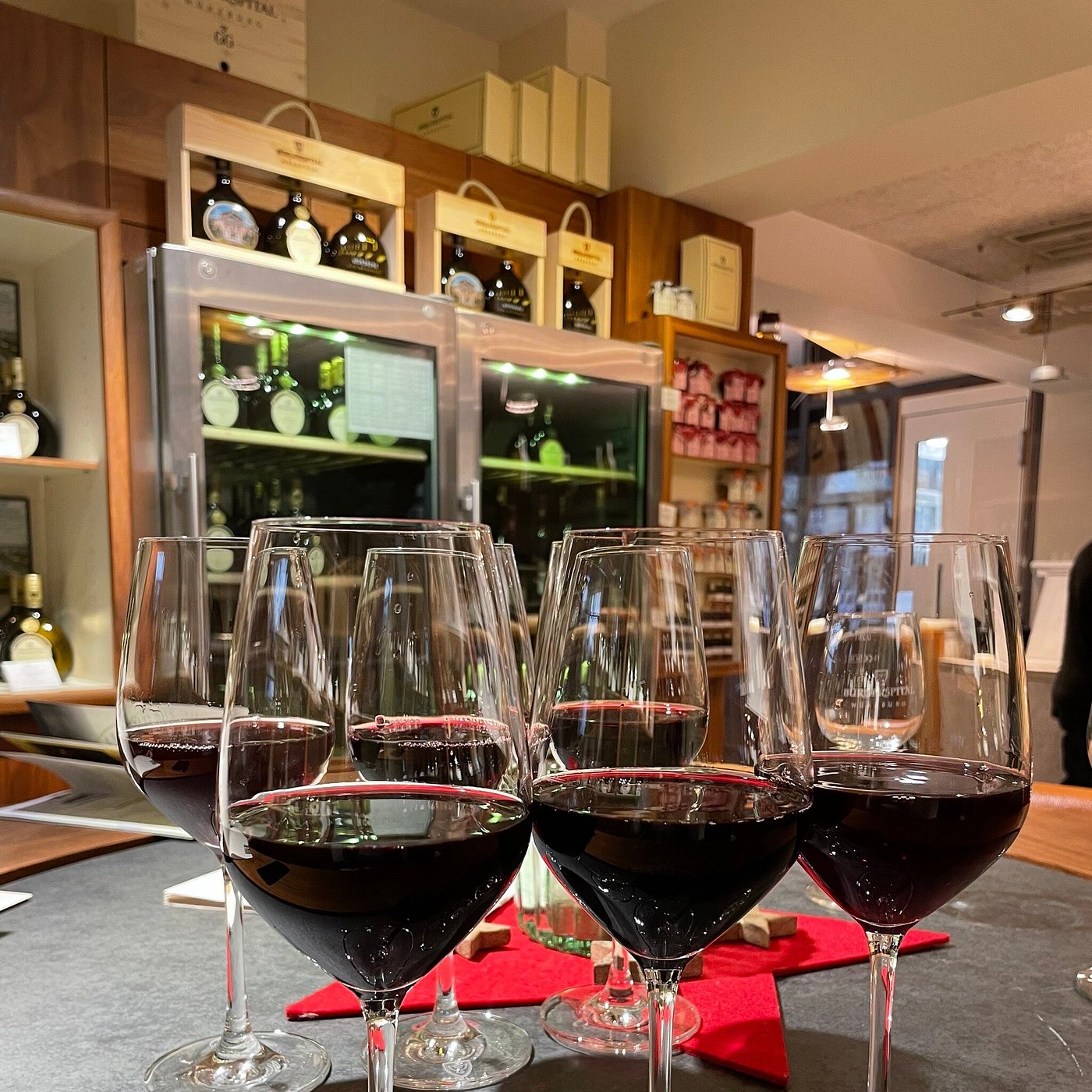
Meeting Local Wine Makers
Some of the best moments on a wine trip come from meeting the people behind the bottles. Local winemakers in Würzburg are usually happy to share their stories and passion.
During my visits, I met vintners who explained everything from how they care for the vines to the challenges of harvest. Some tours, especially at Franconian estates, include time to meet the winemaker face to face.
At Winzerhof Stahl, I learned about sustainable growing methods and tasted Christian L. Stahl’s latest Silvaner right in the courtyard.
Small-group tours sometimes end with an informal Q&A, where you can ask about grape selection or even why the Bocksbeutel looks the way it does. These chats gave me a real appreciation for the love and effort that go into every bottle.
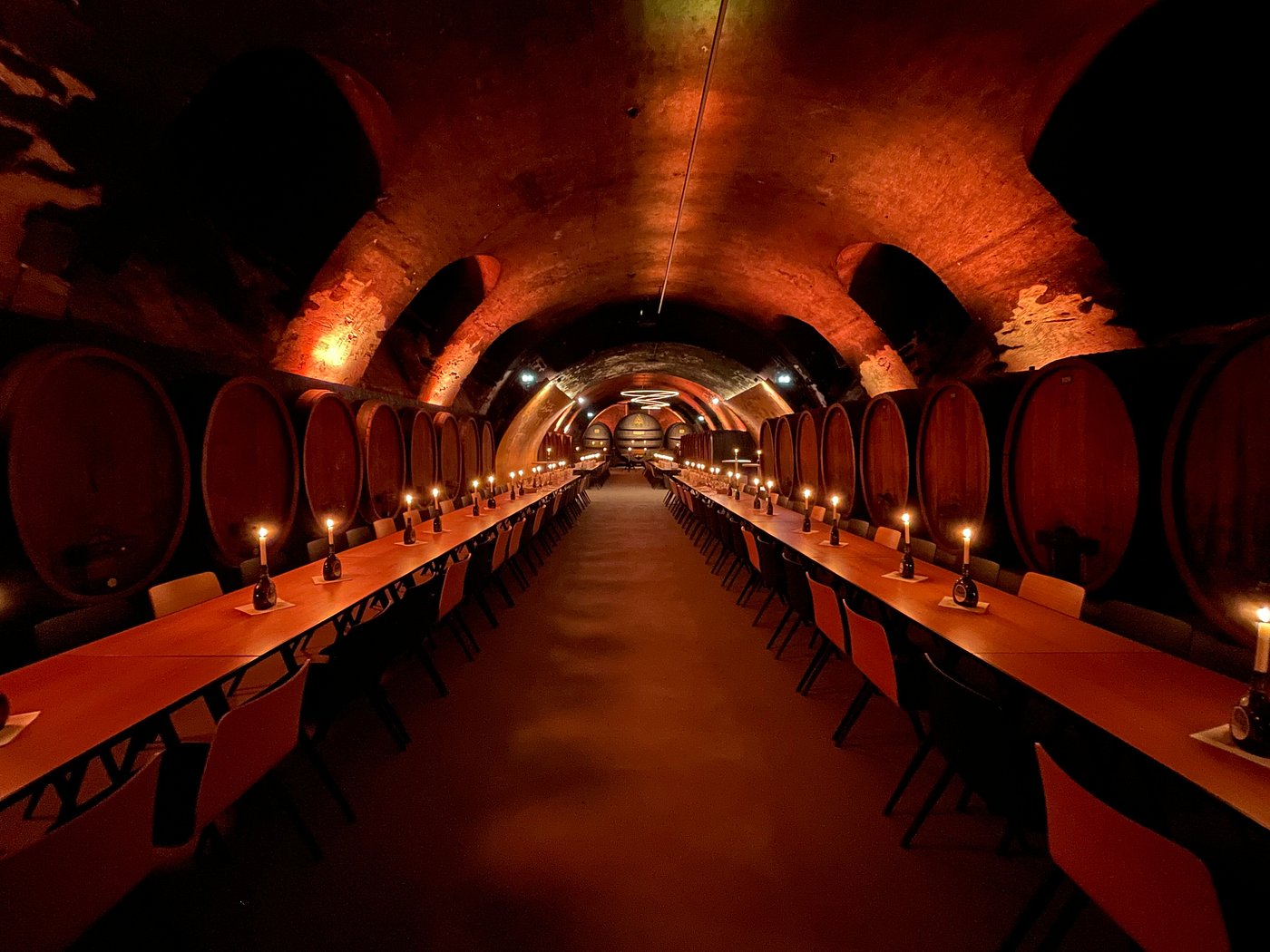
Exploring VDP Classified Estates
Würzburg is also home to several top wineries that belong to the VDP, Germany’s elite winemaker association. The VDP (Verband Deutscher Prädikatsweingüter) sets strict quality standards and classifies the best estates.
Visiting a VDP member like Schlossgut Diel was a standout part of my trip. These estates often offer guided flights of their best wines—some you won’t find anywhere else.
VDP classification includes terms like “Erste Lage” or “Grosse Lage,” which mark top vineyard sites, and staff will explain what these mean as you taste. The attention to detail is clear, from vineyard maps to how they pour each glass.
Their wine shops sometimes have tasting sets you can sample on your own. I liked hearing the stories behind each wine and exploring these properties. It made me see why Würzburg is respected among wine lovers all over Germany.

Silvaner and Beyond: Exploring Other Franconian Wines
Würzburg is famous for Silvaner, but the local wine scene is a lot broader. I found some exciting sparkling wines and a surprisingly good range of reds, like Spätburgunder, that really show off what Franconia can do.
Sparkling Silvaner and Sekt
One of the highlights from my visit? Tasting sparkling Silvaner—a local specialty I’d never tried before.
Franconian winemakers really know how to make Sekt, that’s for sure. They use grapes like Silvaner, Weissburgunder (Pinot Blanc), and Chardonnay.
The best Sekts hit you with fine bubbles and a crisp, lively kick. I noticed flavors of green apple, citrus, and sometimes a little almond from the lees aging.
What really caught my attention was the balance. These Sekts don’t come off as too sweet or heavy.
Instead, they taste fresh and elegant—honestly, just right for sipping on a summer terrace with a view of the Main River.
Several wineries around Würzburg host guided Sekt tastings. If you’re into sparkling wines, I’d say give them a go.
Sekt culture in Franconia adds a festive twist to the usual wine scene.

Red Varietals: Spätburgunder in Franconia
I honestly didn’t expect to find such good local reds, especially Spätburgunder. That’s what the Germans call Pinot Noir.
This grape really seems to love the cooler Franconian climate and those limestone soils. Winemakers here produce reds that feel delicate, yet still burst with bright cherry and those subtle earthy hints I can’t quite describe.
I noticed the best bottles had gentle tannins and just a little bit of spice. Pairing them with regional dishes—roast pork or mushrooms, for example—felt like a no-brainer.
Some wineries aren’t content to stop at Spätburgunder. They also grow Grauburgunder (that’s Pinot Gris) and even a bit of Sauvignon Blanc.
Visitors get plenty to try, not just white wines. Tasting rooms usually pour reds and whites side by side, which makes comparing styles pretty fun.
After trying Franconian Pinot Noir, I started to question what I thought I knew about German red wine. Every glass seemed to share a little piece of the land and the growers’ care.

